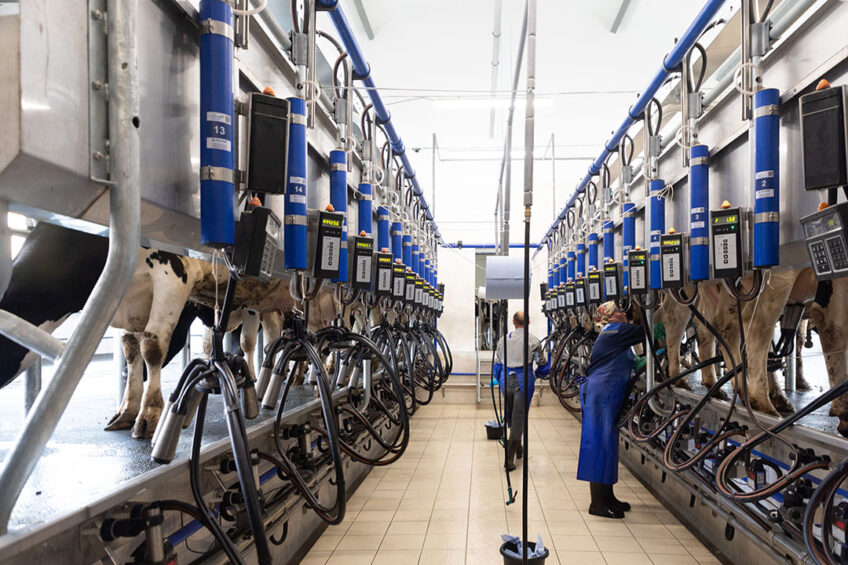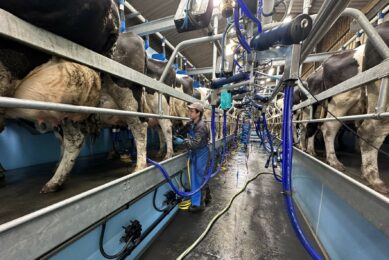Secure long-term viability of the dairy business

Milk producers facing declining prices, labour shortages, fluctuating feed costs and legislative uncertainty have been urged to establish a clear business strategy to secure their long-term viability.
Dairy farmers in the UK are predicted to face declining profits, meaning that it is important for them to address immediate issues on farm that will help mitigate the negative impact this will have on business performance as well as thinking about bigger long-term issues in the sector.
Prices are currently around 37p/litre – down from their high of 55p/litre – but output costs such as diesel and fertiliser costs are still higher than they were 15 months ago.
Securing the future
Edward Lott from Kite Consulting said 3 issues – staff, feed security and efficiency – are key issues farmers will face in the future: “It’s important that planning is being done and investment made in these areas now, to secure the long-term future of many farms.”
One of the common themes Kite Consulting identifies when visiting dairy units is the struggle producers have finding and retaining good labour. And with Brexit and the current government’s immigration policy expecting to lead to further declines in the dairy labour pool, consultant Kaia Hillsmith stressed the need for a good recruitment and retainment plan.
Staff on the dairy farm
“Many businesses are stuck in a negative cycle where they recruit a new member of staff, spend up to 6 months training them and getting them up to speed, only to see that individual quickly leave. Not only is this time-consuming, demoralising and disruptive, but it also generates a high level of uncertainty within a business.
“Many producers will have a big focus on recruitment, but that time and effort is often better spent on retainment. It’s more efficient to keep the staff you have, rather than constantly going through the recruitment cycle,” said Hillsmith.
And while providing staff with good facilities, pay and progression prospects is important, effective leadership is key to staff retainment, and according to Hillsmith, good leaders will attract new staff and keep existing staff in place. One skill that good leaders have is managing staff according to their personal preferences.
Homegrown forage focus
With excessive market volatility, producers need to decrease their exposure and reliance on purchased feed by increasing homegrown forage quality and quantity.
Consultant Marcus Doig said producers should be looking to increase the amount of protein they can grow on farm. They could do this through several strategies, including:
- Incorporating white clover into grass leys
- Taking a multi-cut approach to silaging
- Growing red clover
- Considering alternative forage crops such as lucerne.
And with fertiliser prices finally declining, Doig said that investing in inputs to increase forage protein values might represent a more cost-effective option than buying in feed.
“If producers want grass that hits 17% protein, they need to support that growth with adequate levels of nitrogen, and this is a viable option now. Producers need to invest to get the best quality grass silage, and this goes beyond just fertilisers.
“Taking a multi-cut approach and cutting grass earlier in the season has a big impact on silage quality and quantity. While producers might look to produce around 529kg protein/acre on a 3-cut system, those operating on a 4-cut approach would expect to increase this to 756kg.”
Feed efficiency
With farmers looking to invest in making better quality forages, it is important that cows are developed that will utilise this feed as efficiently as possible.
“We have a growing demand for milk, but environmental pressure to reduce the carbon footprint from the cows producing this milk. Improving a cow’s feed efficiency is key to meeting this challenge and to support long-term business sustainability. If producers can get a cow to produce the same level of milk for less feed or more milk for the same level of feed, then they’re in a very strong position,” said consultant Maimie Sloan.
Genetics and detailed breeding plans can produce more feed-efficient cows in the longer term, but additives can play a role in the shorter term: “There are some very effective live yeast supplements on the markets, and they can have a significant impact on cow performance. These supplements have been shown to complement traditional buffers and help provide a balanced, stable rumen environment that enables rumen microbes to work more effectively and process food more efficiently,” said Sloan.
Join 13,000+ subscribers
Subscribe to our newsletter to stay updated about all the need-to-know content in the dairy sector, two times a week.










